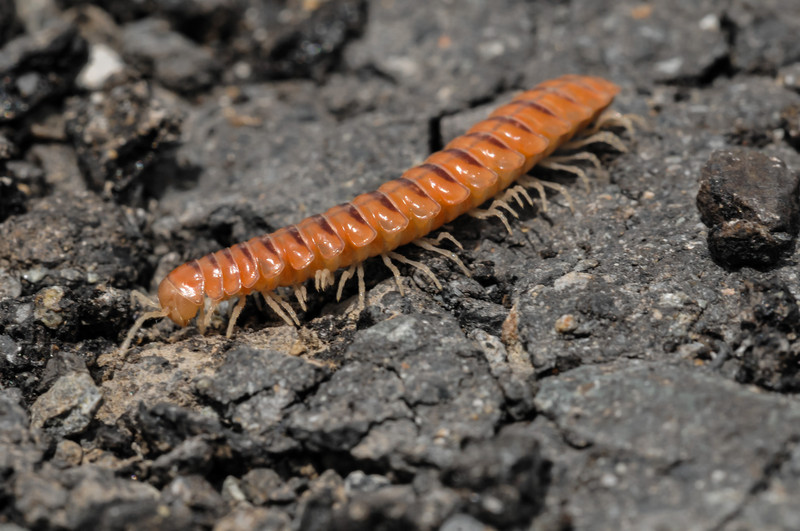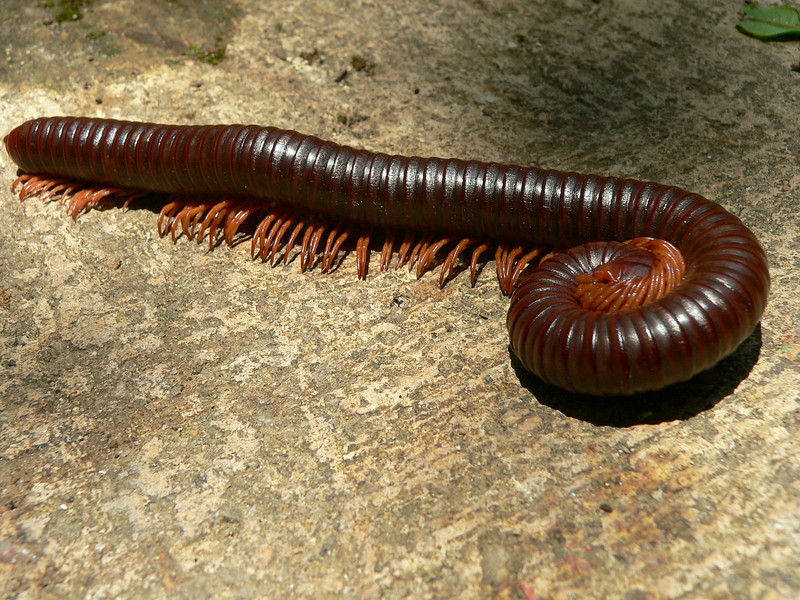Centipedes and millipedes are generally beneficial creatures.
Centipedes feed on soil-dwelling mites, insects, insect larvae, baby snails, and slugs. (They paralyze small insect prey with venomous claws.)
Millipedes feed on decaying plant tissue and fallen fruit.
Together centipedes and millipedes help break down organic matter enriching the soil by helping to create humus.

Sometimes centipedes and millipedes can be pests. Centipedes also eat living plant tissue and earthworms. Millipedes sometimes feed on plant roots, germinating seeds, and seedlings.
Centipedes and millipedes are close relatives of insects, but they are not insects. Centipedes belong to the class Chlopoda, not Insecta; millipedes belong to the class Diplopoda, not Insecta.
Centipedes and millipedes are found throughout North America.
Good Products for Pest and Disease Control at Amazon:
- Garden Safe Snail and Slug Bait
- Bonide Sulfur Fungicide
- Monterey BT Caterpillar Killer
- Neem Bliss 100-% Cold Pressed Neem Oil
- Safer Brand Insect Killing Soap
- PyGanic Botanical Insecticide
How to identify centipedes and millipedes
Centipedes look like segmented 1-inch worms with 30 or more legs. They are brown, flattened, and have a distinct head, and one pair of jointed legs per segment. They hide during the day under garden debris and are active and feed at night.
Millipedes are up to 2 inches long. They have hard-shelled, cylindrical, and segmented bodies with two pairs of short legs per segment. Millipedes can have up to 400 legs (not 1,000 as their name implies). They are often found coiled in the soil during the day and are active at night.
Centipedes are fast-moving. Millipedes are slow-moving.

Centipede and millipede life cycle
Centipedes and millipedes overwinter as adults in the soil. In spring, they lay clusters of translucent eggs. Nymphs are smaller versions of adults. There are many generations of centipedes each year. There is just one generation of millipedes each year.
Target plants
Centipedes can be pests when they feed on the roots of asparagus, cucumber, lettuce, radish, and tomato. Millipedes can be pests when they eat the roots of beans, cabbage, carrots, corn, potatoes, strawberries tomatoes, and turnips.
Centipede and millipede control
To prevent centipedes and millipedes from eating the above-ground portions of plants, sprinkle wood ashes, diatomaceous earth, or cinders around plants, seedlings, and near rows of germinating seeds.
Related articles:
Vegetable Garden Beneficial Insects
Garden Planning Books at Amazon:
- Vegetable Garden Almanac & Planner
- Kitchen Garden Grower’s Guide Vegetable Encyclopedia
- Vegetable Garden Grower’s Guide
- Tomato Grower’s Answer Book















